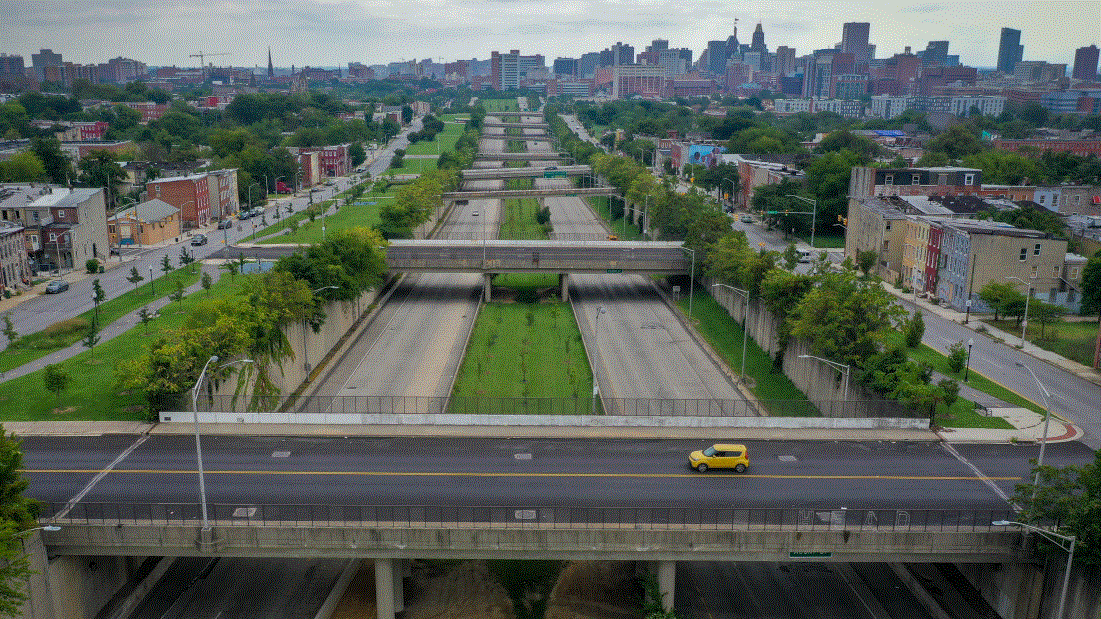
Many Black families were displaced in the 1970s so that a sunken, 1.4-mile section of U.S. 40/Interstate 70, often called the “Highway to Nowhere” could be built through the middle of West Baltimore. (Jerry Jackson/Baltimore Sun)
Baltimore urban renewal often goes ‘Nowhere’ | READER COMMENTARY
Originally published in the Baltimore Sun
Kudos to Jean Marbella for her splendid review of one of Baltimore’s most destructive public policies of the late 1960s and early 1970s (“Baltimore’s ‘Highway to Nowhere’ took the homes of thousands,” Jan. 18).
The planners and politicians who relied on eminent domain property seizures to build “big footprint” projects (for public housing, transportation and sometimes just for well-connected private developers) might well have had good intentions, but history shows their grand plans were abject failures. These projects did not eliminate blight but spread it; they did not fuel investment but repelled it.
Along the route of the “Highway to Nowhere,” of course, the bulldozers devastated neighborhoods and destroyed social capital (the networks of friends and neighbors Marbella highlighted in her piece) rather quickly and dramatically. But that was just one of the city’s many policy blunders of that era. When city leaders raised property taxes 19 times over the 25 years from 1950 to 1975, they guaranteed a slower-paced but equally damaging and persistent disinvestment crisis.
The sad thing is that contemporary city leaders continue to bank on large-scale renewal projects won by subsidizing favored developers with tax-increment-financing and they fight tooth and nail to defend the city’s non-competitive property tax rate against reform efforts. Until they learn the key lessons of the city’s history, they will find that disinvestment and flight continue.
— Stephen J.K. Walters, Baltimore






